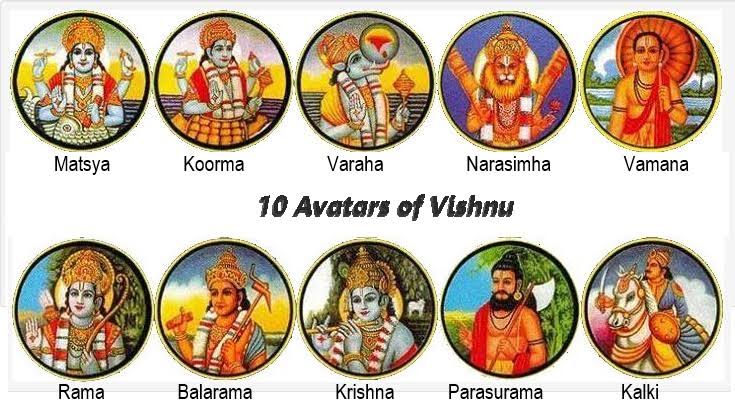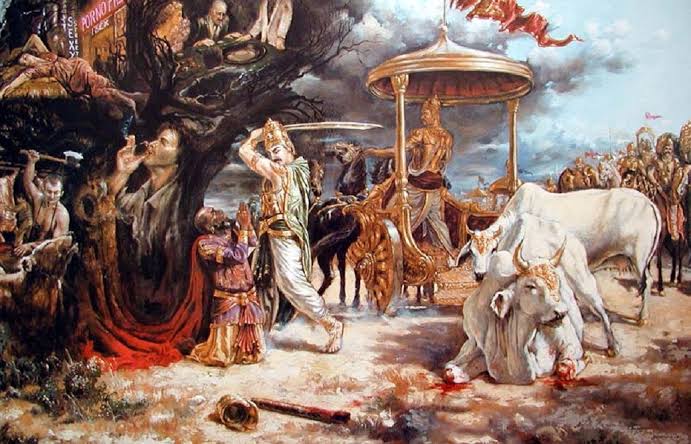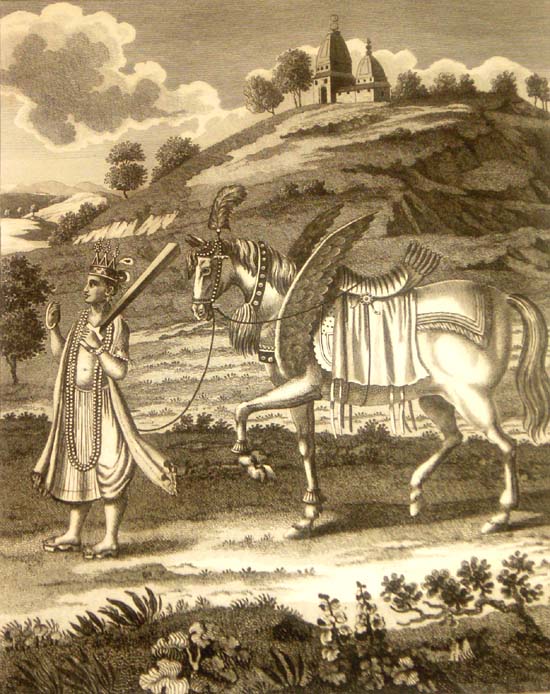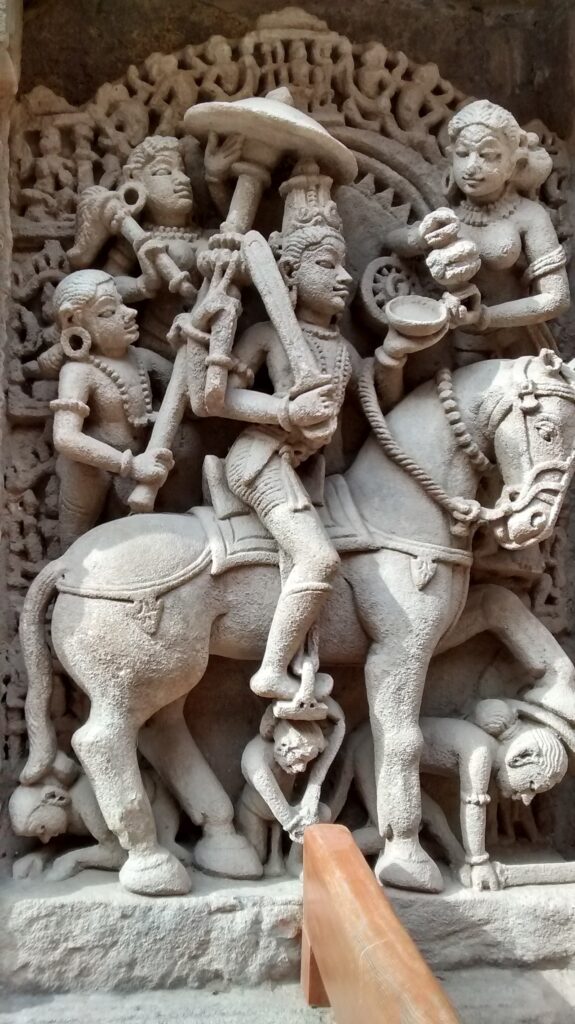Understanding the Final Avatar of Vishnu and His Role in Restoring Cosmic Order
Kalki 2898 AD (stylized as Kalki 2898 − A.D), an upcoming 2024 Indian epic dystopian science fiction action film, is poised to captivate audiences with its futuristic take on a deeply rooted mythological prophecy. Written and directed by Nag Ashwin, this film features a star-studded ensemble cast including Prabhas, Amitabh Bachchan, Kamal Haasan, Deepika Padukone, Disha Patani, and Brahmanandam. Set in a post-apocalyptic world in the year 2898 AD, the film draws inspiration from Hindu scriptures, weaving a narrative that envisions the arrival of Kalki, the final avatar of Vishnu.
This blog delves into the mythological background, significance, and interpretations of Kalki, exploring his role in the cyclical concept of time and his anticipated arrival, while connecting these ancient beliefs with their modern reinterpretation in the film.
The Concept of Avatars in Hinduism

Hinduism, one of the oldest religions in the world, is replete with rich and diverse narratives that explain the workings of the cosmos and the divine. Central to these narratives is the concept of avatars, which are manifestations of the divine, particularly of Lord Vishnu, the preserver and protector of the universe. According to Hindu belief, Vishnu incarnates in various forms to restore dharma (cosmic order and righteousness) whenever it is threatened by adharma (unrighteousness and chaos).
The ten principal avatars of Vishnu, known as the Dashavatara, span across different epochs or yugas in Hindu cosmology. These avatars include well-known figures such as Rama and Krishna, who have played pivotal roles in the Ramayana and Mahabharata, respectively. The tenth avatar, Kalki, is yet to appear and is prophesied to manifest in the future during the Kali Yuga, the current and final age of the cosmic cycle.
The Kali Yuga and the Need for Kalki

Hindu cosmology divides time into four great epochs or yugas: Satya Yuga, Treta Yuga, Dvapara Yuga, and Kali Yuga. Each yuga is characterized by varying degrees of virtue and vice, with Satya Yuga being the age of truth and righteousness, and Kali Yuga being an era marked by moral decline, corruption, and widespread adharma.
The Kali Yuga, which we are currently in, is described as a time of great darkness and degradation. It is an age where virtues such as truth, compassion, and justice are in decline, and vices such as greed, dishonesty, and cruelty are rampant. The ancient texts predict that as Kali Yuga progresses, human values will deteriorate further, leading to societal collapse and widespread suffering. It is in this context of moral and social decay that the arrival of Kalki is foretold.
Kalki: The Warrior Messiah

The name Kalki is derived from the Sanskrit word “kalka,” which means filth or dirt, symbolizing the purging of impurities from the world. Kalki is envisioned as a mighty warrior, riding a white horse and wielding a sword that blazes like a comet. He is often depicted as an awe-inspiring figure with a radiant complexion, signifying his divine nature.
According to the Puranas, particularly the Vishnu Purana and the Bhagavata Purana, Kalki will be born in the village of Shambhala to a devout Brahmin family. His father, Vishnuyasha, and mother, Sumati, are described as pious individuals devoted to righteousness. Kalki’s mission will be to vanquish the forces of evil, destroy corrupt rulers, and re-establish dharma on Earth. His advent will mark the end of the Kali Yuga and the beginning of a new Satya Yuga, thereby completing the cycle of time.
Symbolism and Interpretation

Kalki’s role as the harbinger of a new era is rich in symbolism and has been interpreted in various ways. On a literal level, Kalki is seen as a divine savior who will physically descend to rid the world of evil and restore order. This interpretation resonates with the deep-seated human desire for justice and the eradication of suffering.
On a metaphorical level, Kalki represents the inner transformation that individuals and societies must undergo to overcome ignorance and vice. The white horse symbolizes purity and the sword of Kalki represents the sharpness of wisdom that cuts through the darkness of ignorance. Thus, Kalki’s advent can also be seen as an allegory for the spiritual awakening and moral rejuvenation necessary to achieve a harmonious and just world.
Modern Interpretations and Relevance
In contemporary times, the legend of Kalki continues to inspire and resonate with people across different cultures and backgrounds. The idea of a savior who will usher in an era of peace and righteousness is a powerful motif that transcends religious boundaries. In Hinduism, Kalki remains a potent symbol of hope and faith in the eventual triumph of good over evil.
Modern spiritual leaders and thinkers have also drawn upon the Kalki prophecy to emphasize the importance of personal and collective transformation. They advocate for inner purity, ethical conduct, and social responsibility as means to bring about positive change in the world. The message of Kalki, therefore, extends beyond the realm of myth and serves as a reminder of the enduring human quest for a just and harmonious society.
Kalki 2898 AD: A Modern Reinterpretation
Nag Ashwin’s upcoming film, Kalki 2898 AD, represents a contemporary reimagining of the ancient prophecy of Kalki. Set in a post-apocalyptic world, the film envisions the advent of Kalki in the distant future, blending elements of science fiction with traditional Hindu mythology. This creative approach highlights the timeless relevance of the Kalki legend and its adaptability to various narrative forms.
The film’s portrayal of a dystopian future plagued by chaos and moral decay mirrors the conditions described in Hindu scriptures for the Kali Yuga. By setting the story in 2898 AD, the filmmakers emphasize the enduring nature of the struggle between good and evil and the perpetual need for divine intervention and human redemption.
In conclusion, Kalki, the prophesied tenth avatar of Vishnu, occupies a unique and significant place in Hindu mythology. As the harbinger of the end of the Kali Yuga and the restorer of cosmic order, Kalki embodies the promise of divine intervention and the ultimate triumph of righteousness. While rooted in ancient texts and traditions, the legend of Kalki continues to inspire and resonate with people today, offering a message of hope, justice, and spiritual awakening. Whether viewed as a literal future event or a metaphor for personal and societal transformation, Kalki’s story underscores the timeless belief in the cyclical nature of time and the perpetual struggle between good and evil. As we navigate the challenges of the modern world, the prophecy of Kalki, and its reinterpretation in works like Kalki 2898 AD, remind us of the enduring human aspiration for a world where truth, justice, and compassion prevail.
Write with us✍?
TeamUgtWorld warmly welcomes everyone! If you have something on your mind that you’d like to write about, we invite you to publish your thoughts on our platform @Ugtworld. To learn more, please click on the link provided below.


